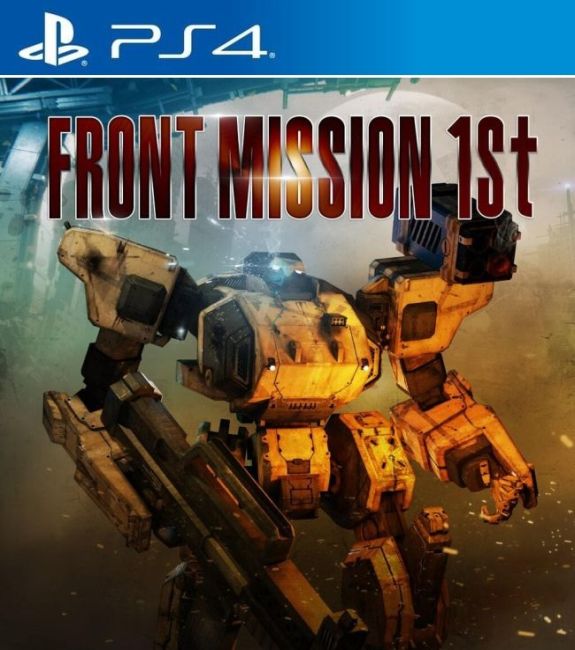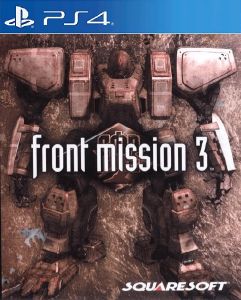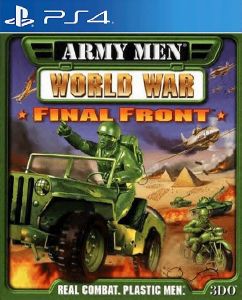Front Mission 3
Year: 2000
Genre: Tactical Role-Playing (RPG), Strategy
Developer: Square Co., Ltd.
Publisher: Square Electronic Arts LLC
Disc Code: SLUS01011
Game Region: NTSC-U
Multiplayer: No
Game Version: 1.1
Minimum Firmware Version: 5.05
Editor-Tested Performance: Yes
Interface Language: Russian
Audio Language: Russian
Subtitles: Text and Voice
Age: M - 17+
Description: Everyone's favorite tactical role-playing game about large walking robots, combining relative realism, an exciting non-linear plot, and a powerful pumping system.
In a strange irony, the first game in the series released outside Japan focuses largely on what is happening in that country. Since Japan does not have offensive forces, only self-defense forces, it is not directly involved in the OCU conflicts. With UCS, for the same reason, we usually see few Japanese people in games in the series. And in the third part, many things are arranged in a special way, including the nationalities of the characters.
For the first, and so far only, time in Front Mission history, the main characters aren't professional soldiers. Kazuki and Ryugu are students working part-time as test pilots. By helping deliver Wanzers to the military base in Yokosuka, they become unwitting witnesses to the testing of a new type of weapon—an environmentally friendly atomic bomb. The military soon begins hunting the men, and they must rush out of the country—not only to save themselves, but also to extract Kazuki's half-sister Alice from the clutches of international terrorists and prevent them from getting their hands on them. A new super-bomb.
Front Mission 3's plot is fascinating. It's global, dynamic, somewhat confusing, and even nonlinear. The answer to a simple question at the beginning of the game determines which of two radically different options will develop: whether we have to cooperate with the Americans (UCS) or the Chinese (DHZ). Even the course of these scenarios themselves sometimes varies depending on our actions in field combat, so the game's replayability is very good.
The gameplay has undergone significant tweaks. The problem of a group of people wandering aimlessly has been resolved. However, it may be eliminated too radically—you can only send four people into battle. Such a strict limitation significantly narrows the scope of tactical maneuvers, as fewer participants means a smaller scope. Battles have become noticeably shorter and simpler, while their total number has increased. However, there's no talk of a shift from quality to quantity. Diversifying the gameplay can be useful from time to time.
The network is worth mentioning in a separate paragraph. The ability to connect to the World Wide Web and get all kinds of information from there was also present in the previous 2nd Front mission, but there it was designed in a rather austere, not user-friendly way, so to speak. Everything here is clear, colorful, and with a dose of self-irony; in a word, bliss. For example, I really enjoyed the pompous online presentation of the methane-powered Wanzer. Another funny moment was how the leader of a mercenary group was caught deleting spam comments on his official website, which he had to justify. Both the technological marvel and the brave warriors can, of course, be encountered in the main game.
Definitely one of the best games in the series - only the fifth part can challenge its rights to the podium. And then, it is executed in a different, more serious manner, without such a gushing enthusiasm, and there is no atmosphere of participation in a global adventure, which is clearly felt here.
Video
about the release .
Screenshots
. Screenshot of the game code/game region/game version and firmware version.

Year: 2000
Genre: Tactical Role-Playing (RPG), Strategy
Developer: Square Co., Ltd.
Publisher: Square Electronic Arts LLC
Disc Code: SLUS01011
Game Region: NTSC-U
Multiplayer: No
Game Version: 1.1
Minimum Firmware Version: 5.05
Editor-Tested Performance: Yes
Interface Language: Russian
Audio Language: Russian
Subtitles: Text and Voice
Age: M - 17+
Description: Everyone's favorite tactical role-playing game about large walking robots, combining relative realism, an exciting non-linear plot, and a powerful pumping system.
In a strange irony, the first game in the series released outside Japan focuses largely on what is happening in that country. Since Japan does not have offensive forces, only self-defense forces, it is not directly involved in the OCU conflicts. With UCS, for the same reason, we usually see few Japanese people in games in the series. And in the third part, many things are arranged in a special way, including the nationalities of the characters.
For the first, and so far only, time in Front Mission history, the main characters aren't professional soldiers. Kazuki and Ryugu are students working part-time as test pilots. By helping deliver Wanzers to the military base in Yokosuka, they become unwitting witnesses to the testing of a new type of weapon—an environmentally friendly atomic bomb. The military soon begins hunting the men, and they must rush out of the country—not only to save themselves, but also to extract Kazuki's half-sister Alice from the clutches of international terrorists and prevent them from getting their hands on them. A new super-bomb.
Front Mission 3's plot is fascinating. It's global, dynamic, somewhat confusing, and even nonlinear. The answer to a simple question at the beginning of the game determines which of two radically different options will develop: whether we have to cooperate with the Americans (UCS) or the Chinese (DHZ). Even the course of these scenarios themselves sometimes varies depending on our actions in field combat, so the game's replayability is very good.
The gameplay has undergone significant tweaks. The problem of a group of people wandering aimlessly has been resolved. However, it may be eliminated too radically—you can only send four people into battle. Such a strict limitation significantly narrows the scope of tactical maneuvers, as fewer participants means a smaller scope. Battles have become noticeably shorter and simpler, while their total number has increased. However, there's no talk of a shift from quality to quantity. Diversifying the gameplay can be useful from time to time.
The network is worth mentioning in a separate paragraph. The ability to connect to the World Wide Web and get all kinds of information from there was also present in the previous 2nd Front mission, but there it was designed in a rather austere, not user-friendly way, so to speak. Everything here is clear, colorful, and with a dose of self-irony; in a word, bliss. For example, I really enjoyed the pompous online presentation of the methane-powered Wanzer. Another funny moment was how the leader of a mercenary group was caught deleting spam comments on his official website, which he had to justify. Both the technological marvel and the brave warriors can, of course, be encountered in the main game.
Definitely one of the best games in the series - only the fifth part can challenge its rights to the podium. And then, it is executed in a different, more serious manner, without such a gushing enthusiasm, and there is no atmosphere of participation in a global adventure, which is clearly felt here.
Video
about the release .
Screenshots
. Screenshot of the game code/game region/game version and firmware version.


![[PS4 PSX Classics] Front Mission 3 Game Image](https://i6.imageban.ru/out/2022/08/11/f9421068f6e79f0563bd11f48adc4da8.png)





![[PS VR] ASTRO BOT Rescue Mission screenshot](https://i122.fastpic.org/big/2023/0908/4f/36541b98f4939ee6c7e7c0b5dc9d9e4f.jpg?r=1)



